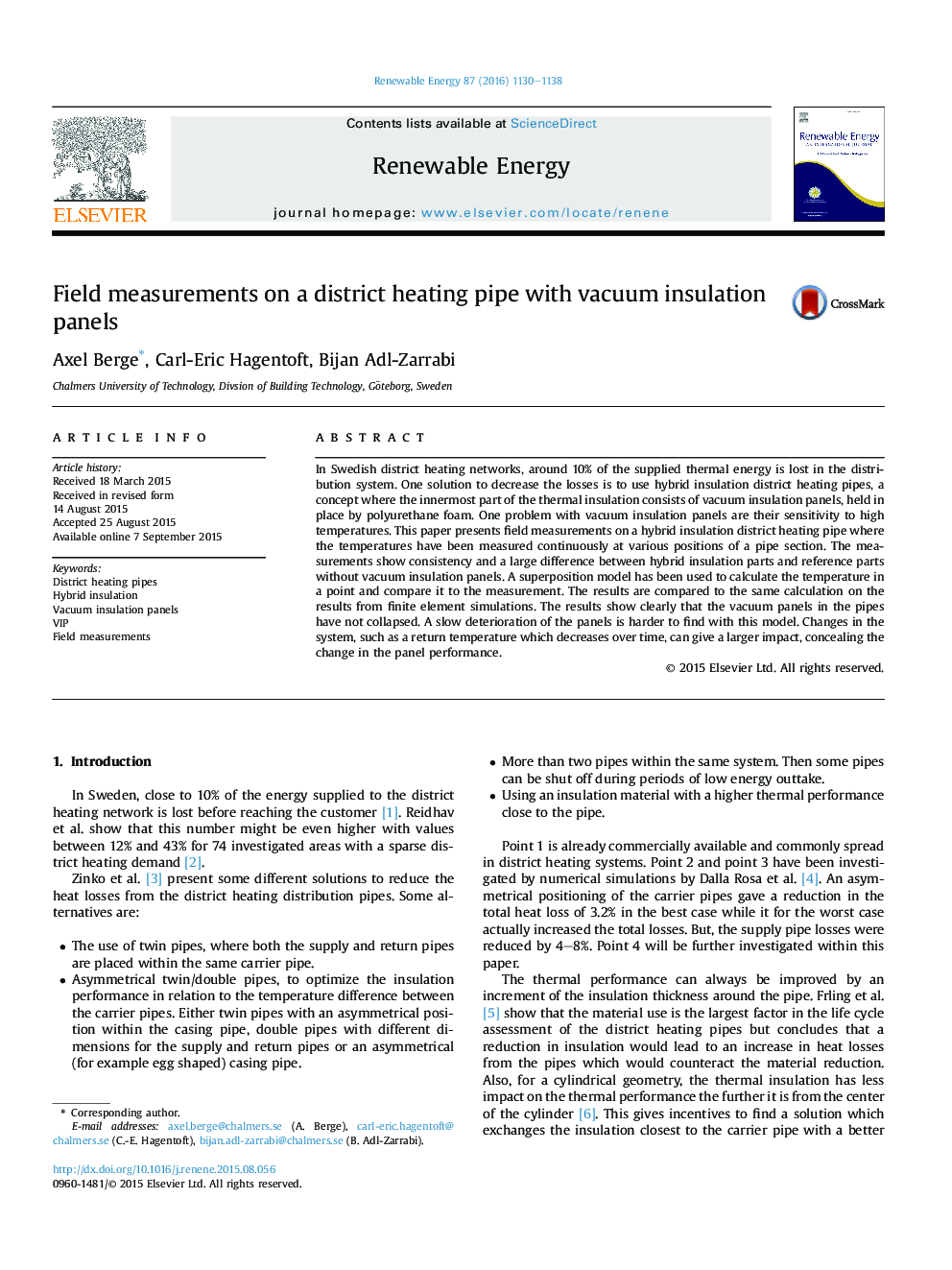| Article ID | Journal | Published Year | Pages | File Type |
|---|---|---|---|---|
| 299869 | Renewable Energy | 2016 | 9 Pages |
•Three years of field measurements on a district heating pipe with vacuum insulation panels for insulation.•Test of a superposition model to evaluate the state of the panels.•The measurements indicate an improved thermal performance.•The analysis with the superposition model shows that the vacuum insulation panels are still intact.•The superposition model has to be more advanced to predict smaller changes in thermal properties.
In Swedish district heating networks, around 10% of the supplied thermal energy is lost in the distribution system. One solution to decrease the losses is to use hybrid insulation district heating pipes, a concept where the innermost part of the thermal insulation consists of vacuum insulation panels, held in place by polyurethane foam. One problem with vacuum insulation panels are their sensitivity to high temperatures. This paper presents field measurements on a hybrid insulation district heating pipe where the temperatures have been measured continuously at various positions of a pipe section. The measurements show consistency and a large difference between hybrid insulation parts and reference parts without vacuum insulation panels. A superposition model has been used to calculate the temperature in a point and compare it to the measurement. The results are compared to the same calculation on the results from finite element simulations. The results show clearly that the vacuum panels in the pipes have not collapsed. A slow deterioration of the panels is harder to find with this model. Changes in the system, such as a return temperature which decreases over time, can give a larger impact, concealing the change in the panel performance.
